Long a staple in Eastern Europe, pickled honey mushrooms are one of the more unique mushroom pickles I've made. The slippery, bouncy buttons can be added to soup, fillings and condiments. I think anyone who picks Armillaria mushrooms should try them, at least once. There's some important things to know about making and using them-today we'll go over the finer points.

Big thanks to long time reader Bob Ford for sending me (and patiently reminding me for years) to try his recipe for pickled honey mushrooms. If you're processed these mushrooms before or made pickles from them you may know they're a learning curve.
If you've cooked honeys before, specifically in soup, you'll know about their magic thickening property, which is another way of saying they become mucilaginous when cooked similar to okra. While there's a number of species, I recommend the Armillaria mellea or gallica group for this. Armillaria tabescens seems more difficult to get in the button stage.
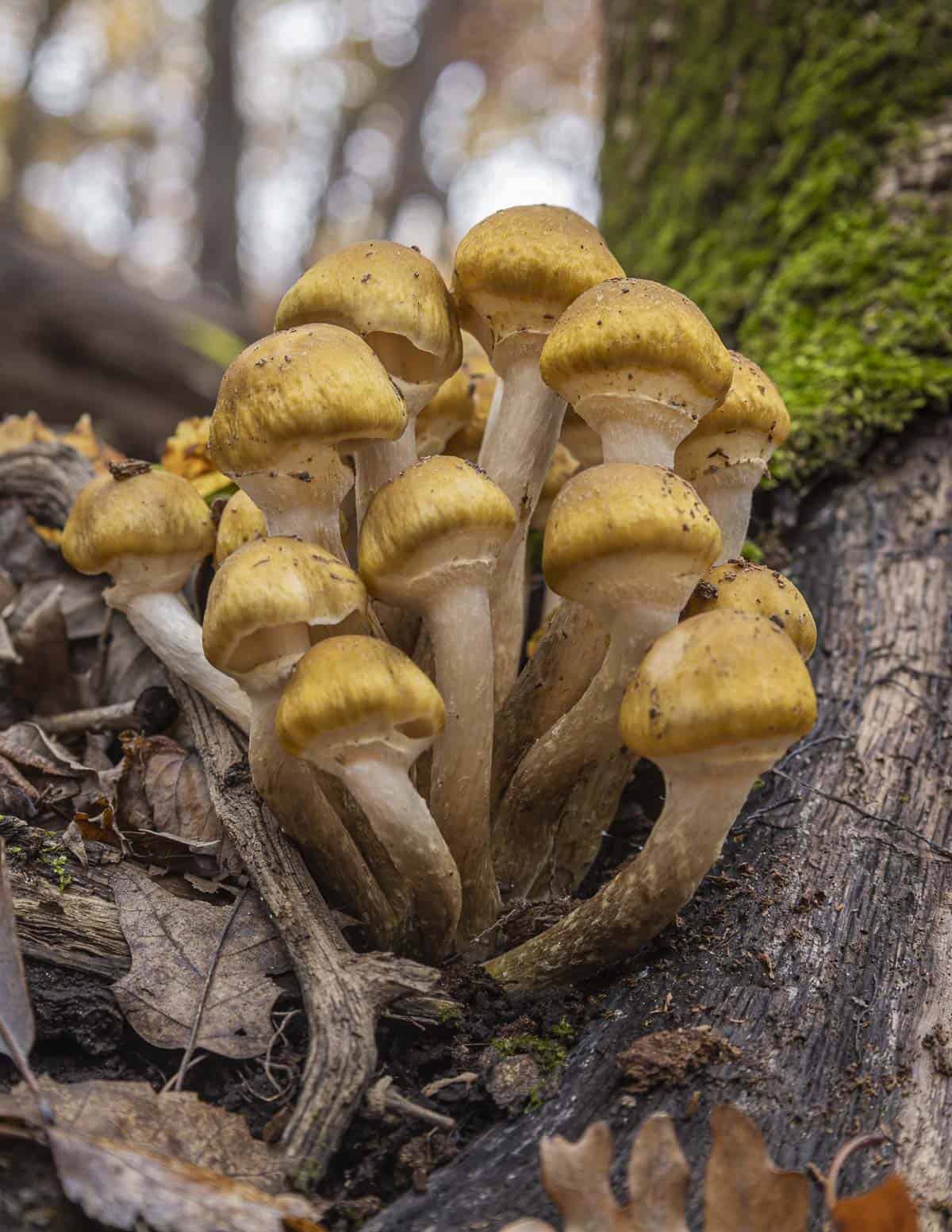
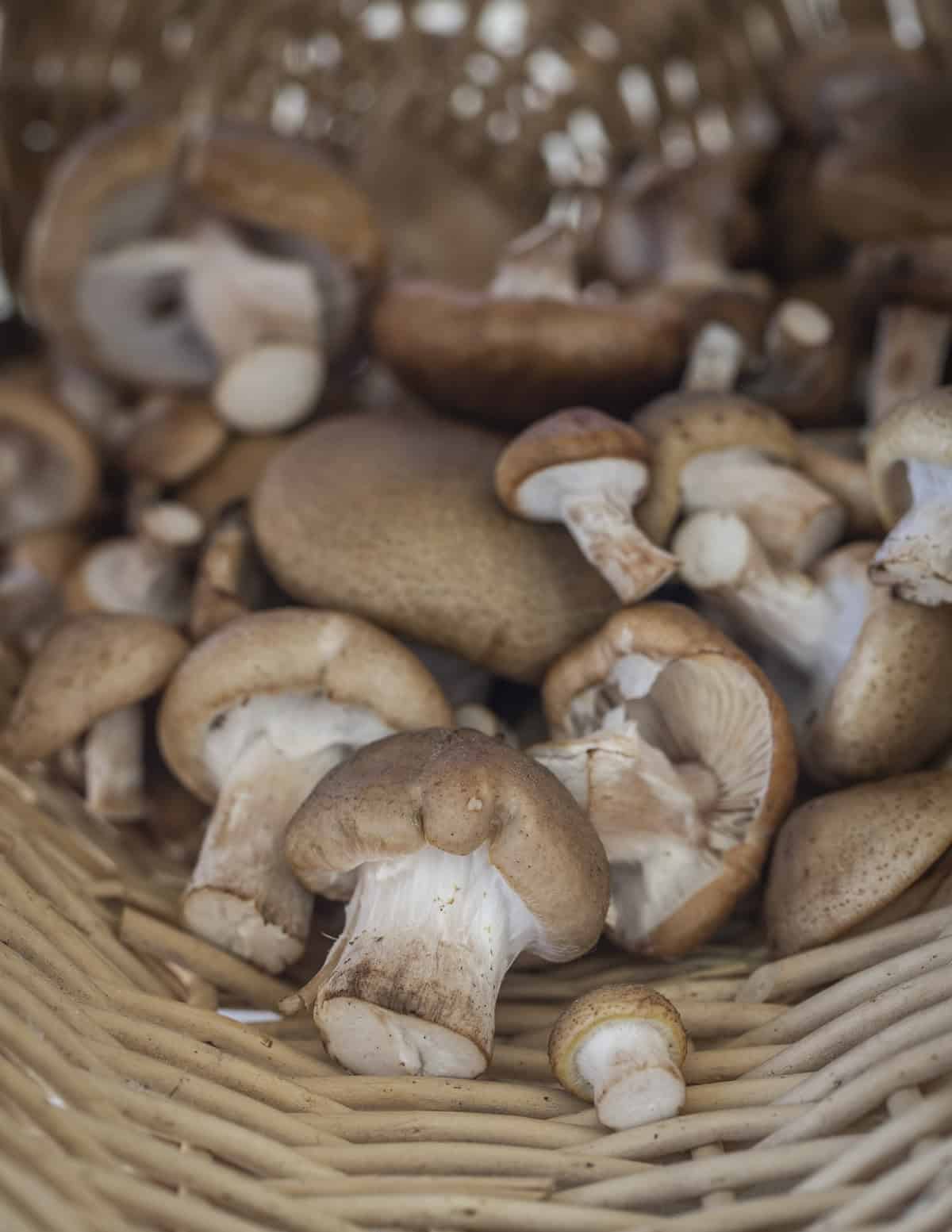
When cooked in a soup all species of honey mushroom will gently thicken it like weak cornstarch. When jarred as a pickle it becomes more pronounced and the pickle liquid will become a thick slurry. Lactarius mushrooms will do the same thing, although to a lesser extent. I'd use this recipe with Lactarius thyinos, if I could ever find enough small buttons.
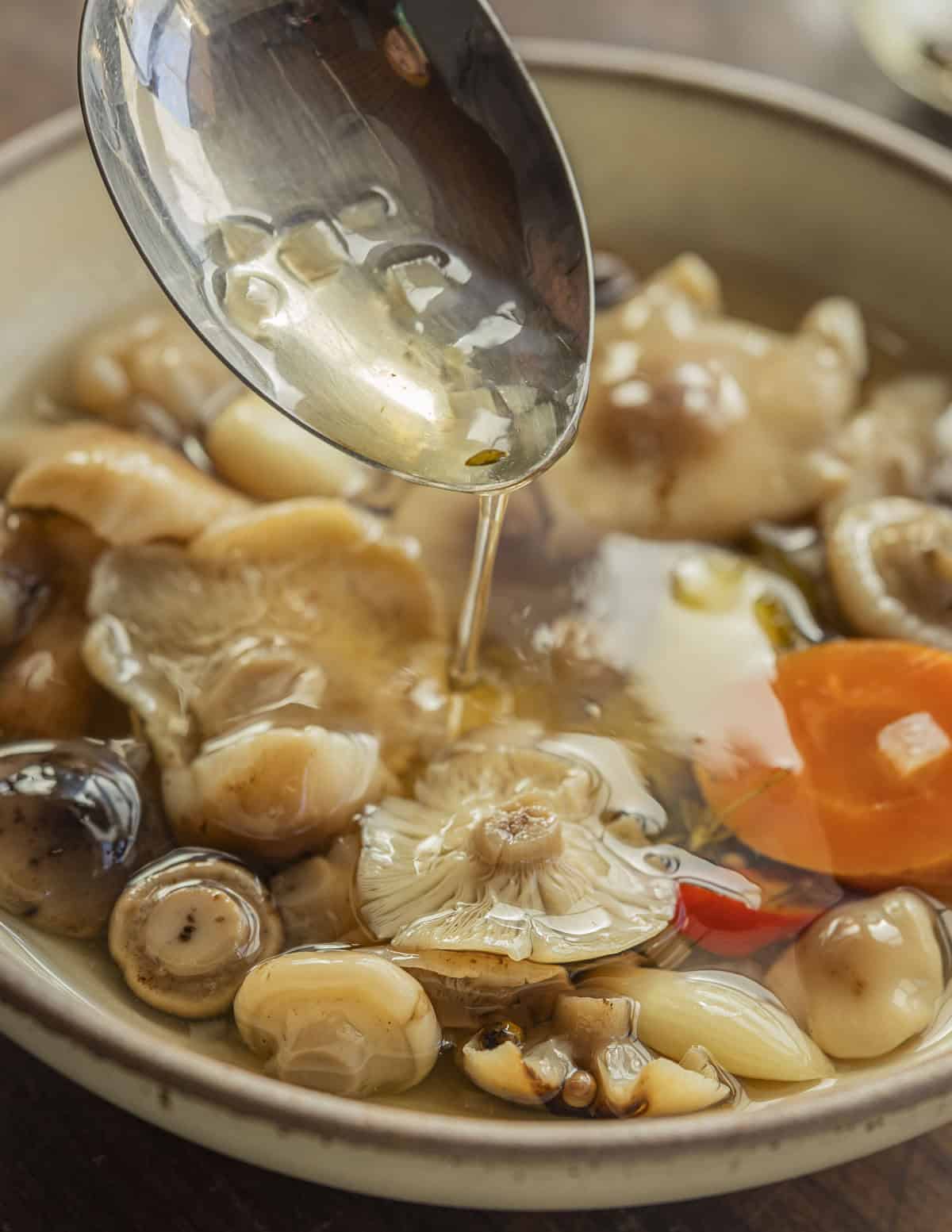
Mucilaginous foods are polarizing and cooking with them is a learned skill. If you keep an open mind though, they can be good. They key is to broaden your horizon with what you use pickled mushrooms for after you open the jar. We'll go over all that, but first I'll walk you through the recipe.
How to Make Pickled Honey Mushrooms
The recipe starts in the field, and by far the most important thing to know is that young buttons are the best for this. Mushrooms that have sporulated or have caps that've opened, will not be as good as tightly closed buttons. As I found out, even slightly opened caps may open and spread out during the cooking process.
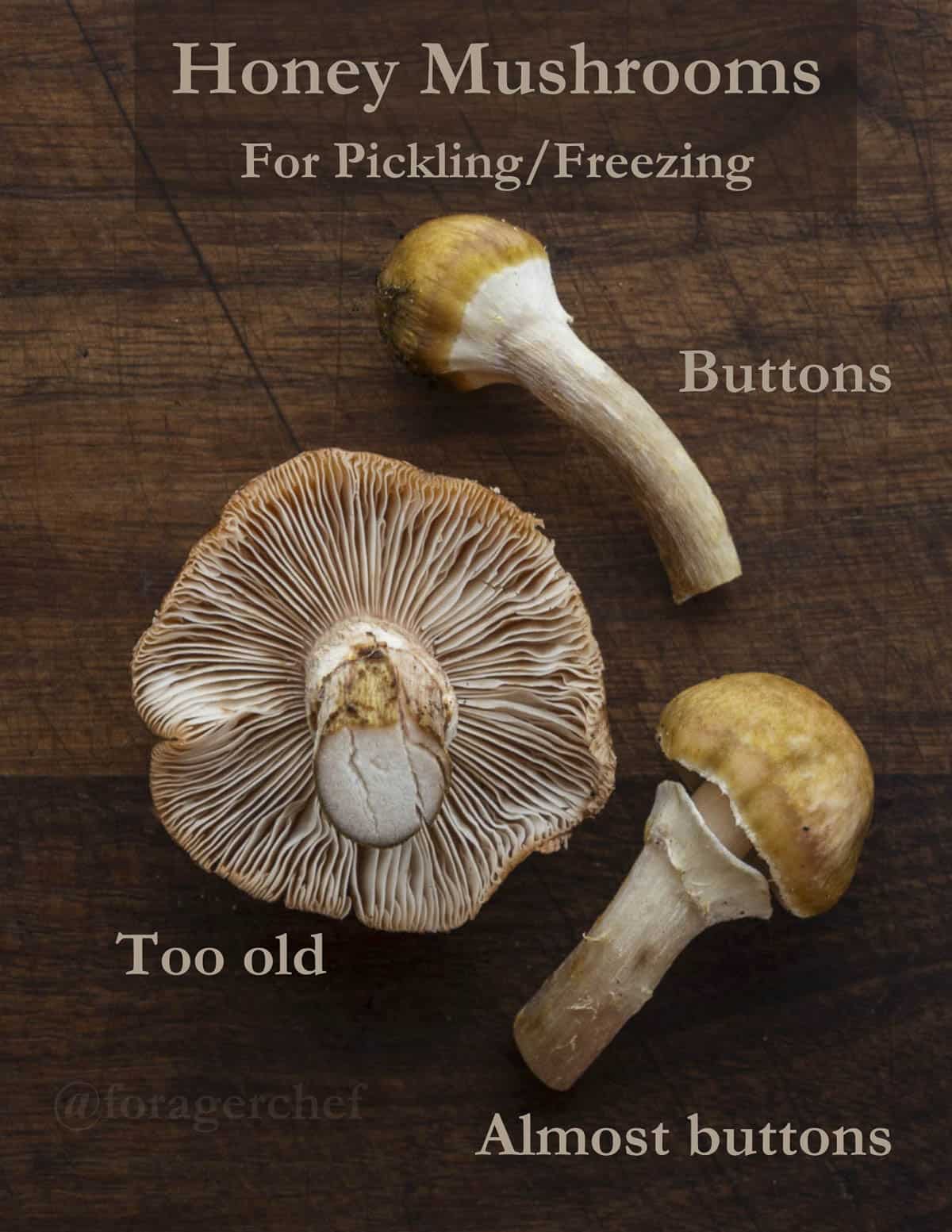
This is something you'll make in late Autumn when the mushrooms are in season, but it can also be made with boiled, frozen honey mushrooms if you want to use some up.
First the mushrooms are trimmed of their stems and par-boiled, drained and rinsed. Boiling the mushrooms locks in their shape as well as removing liquid that would darken the color of the jars.
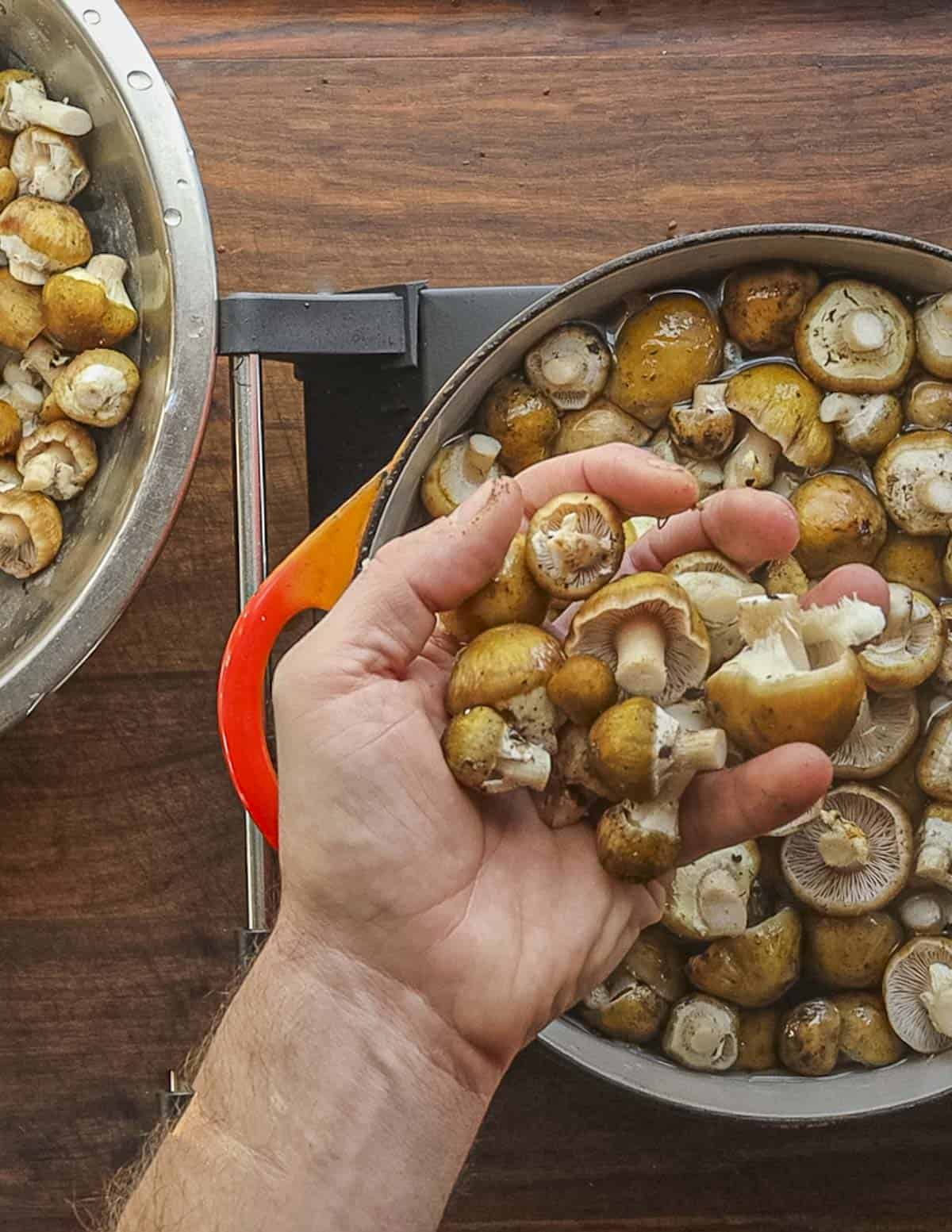
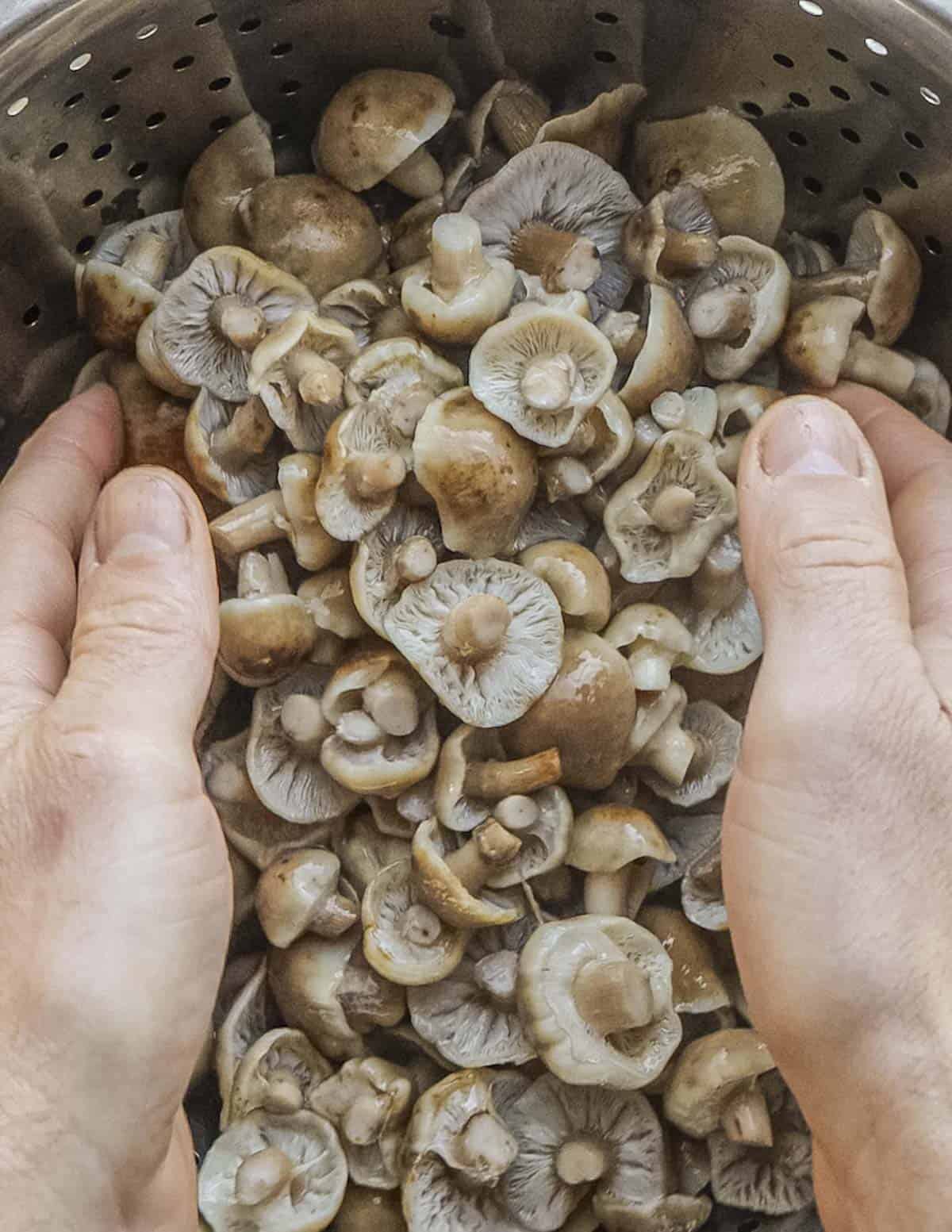
Next the mason jars are partially filled with a few pickling ingredients. Bob says lemon thyme is his favorite herb to use and recommends it if you can.
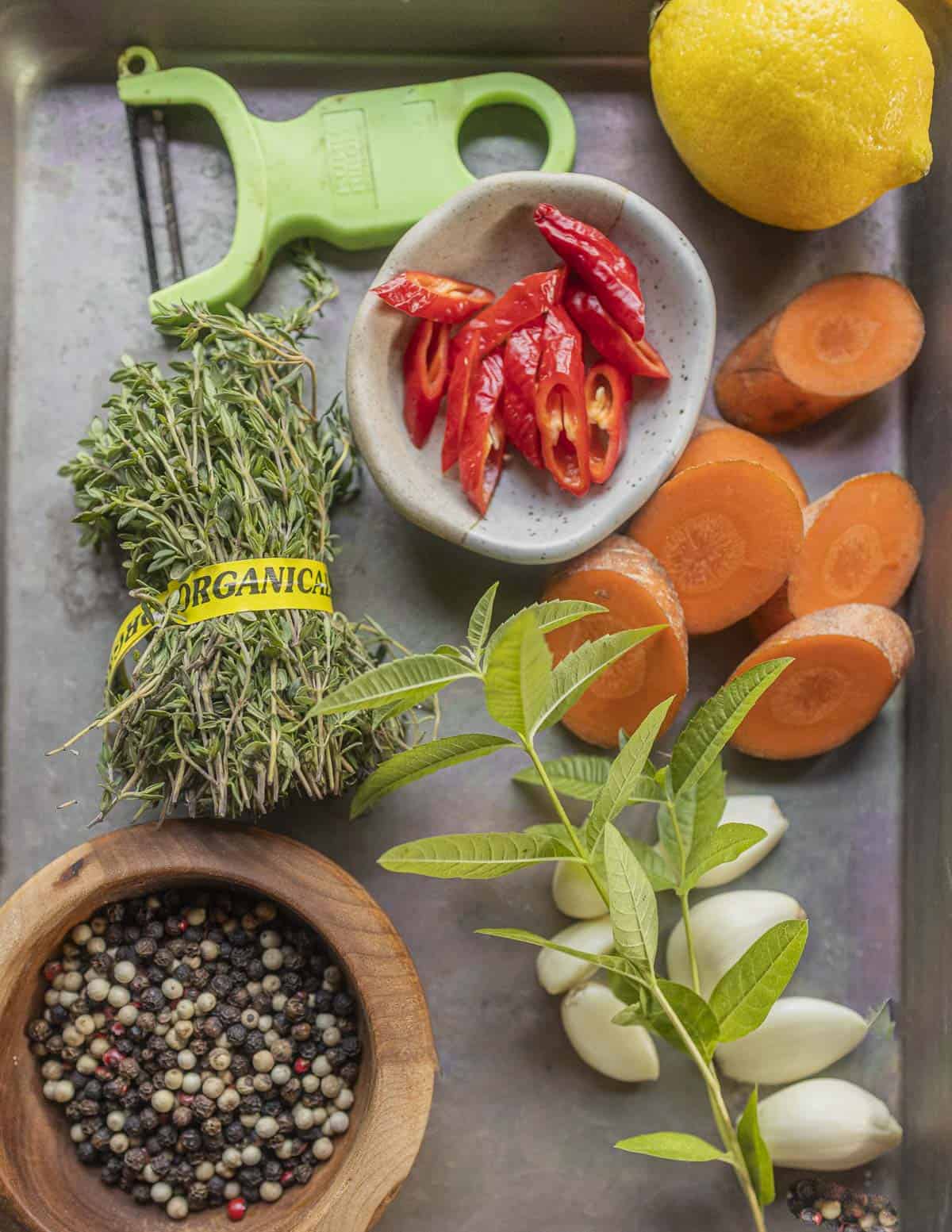
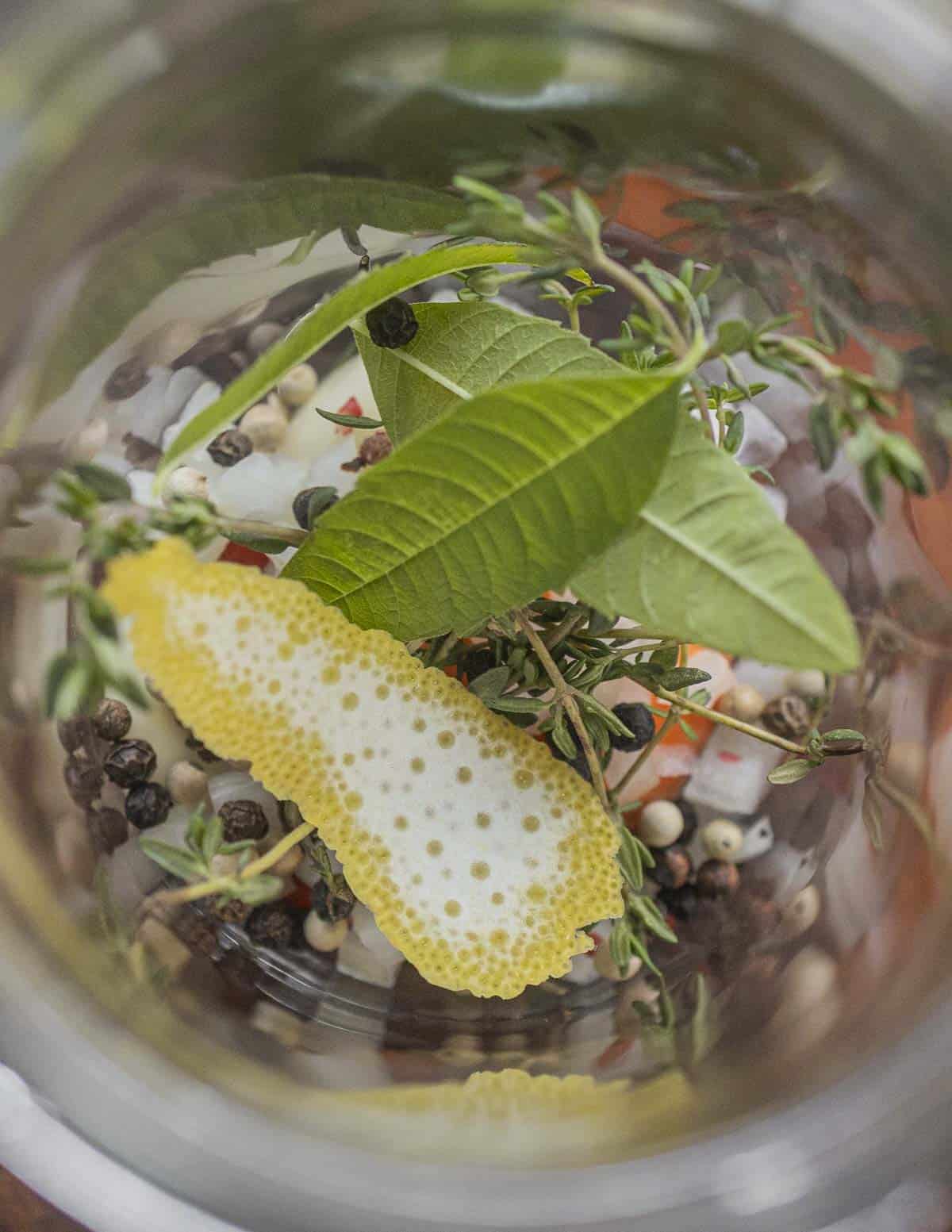
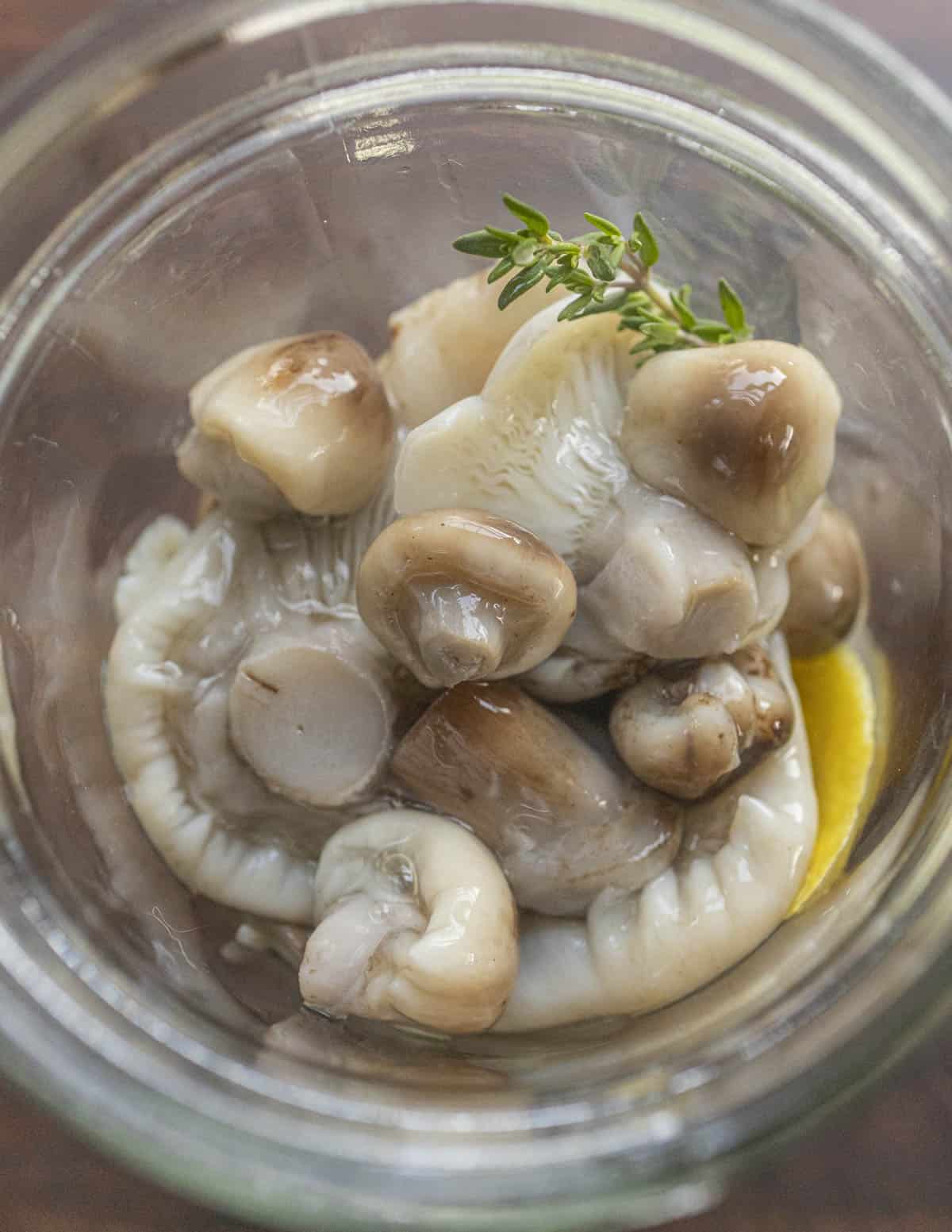
A mixture of sugar, vinegar and salt is boiled and poured into the jars to cover. The jars are processed in a water bath canner, cooled, and stored in a pantry.
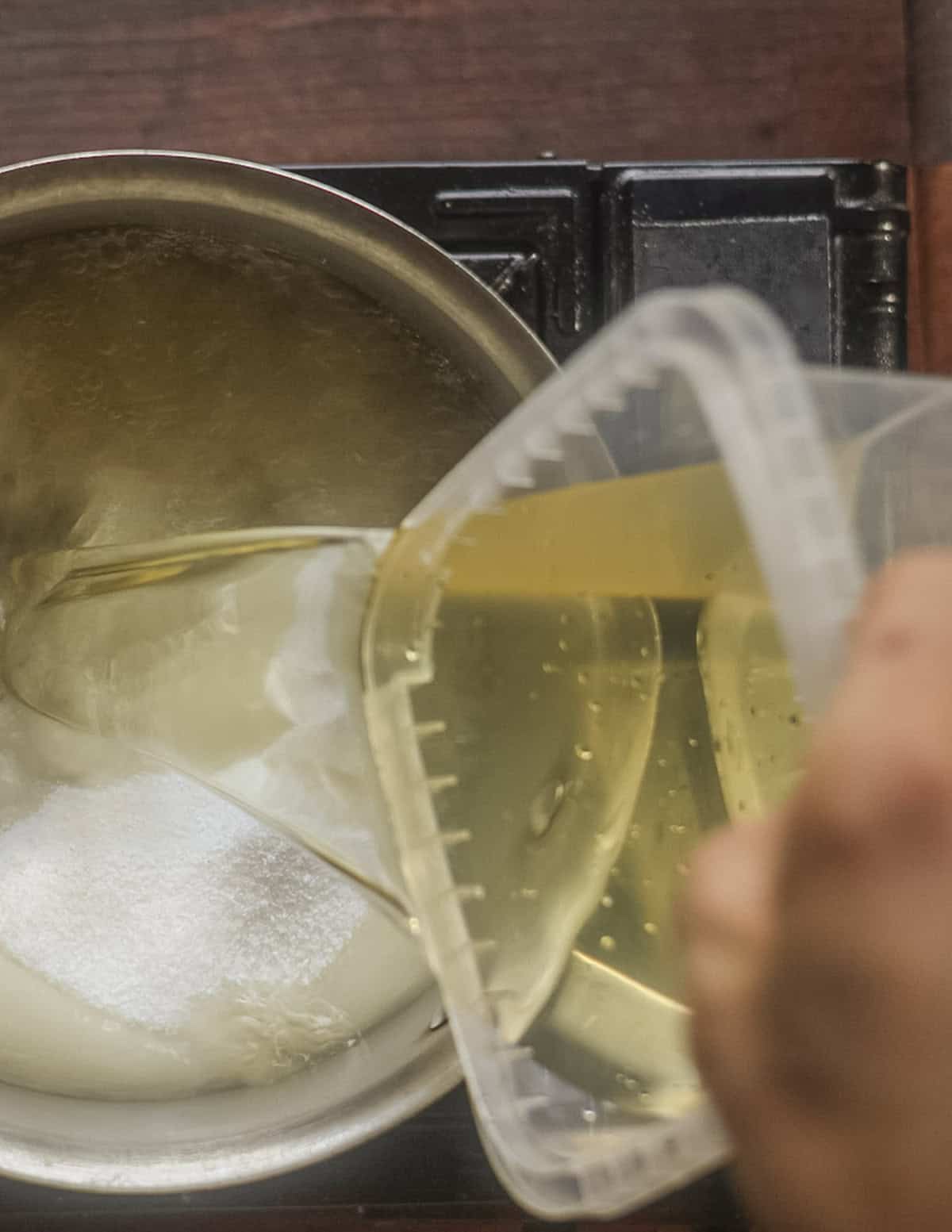
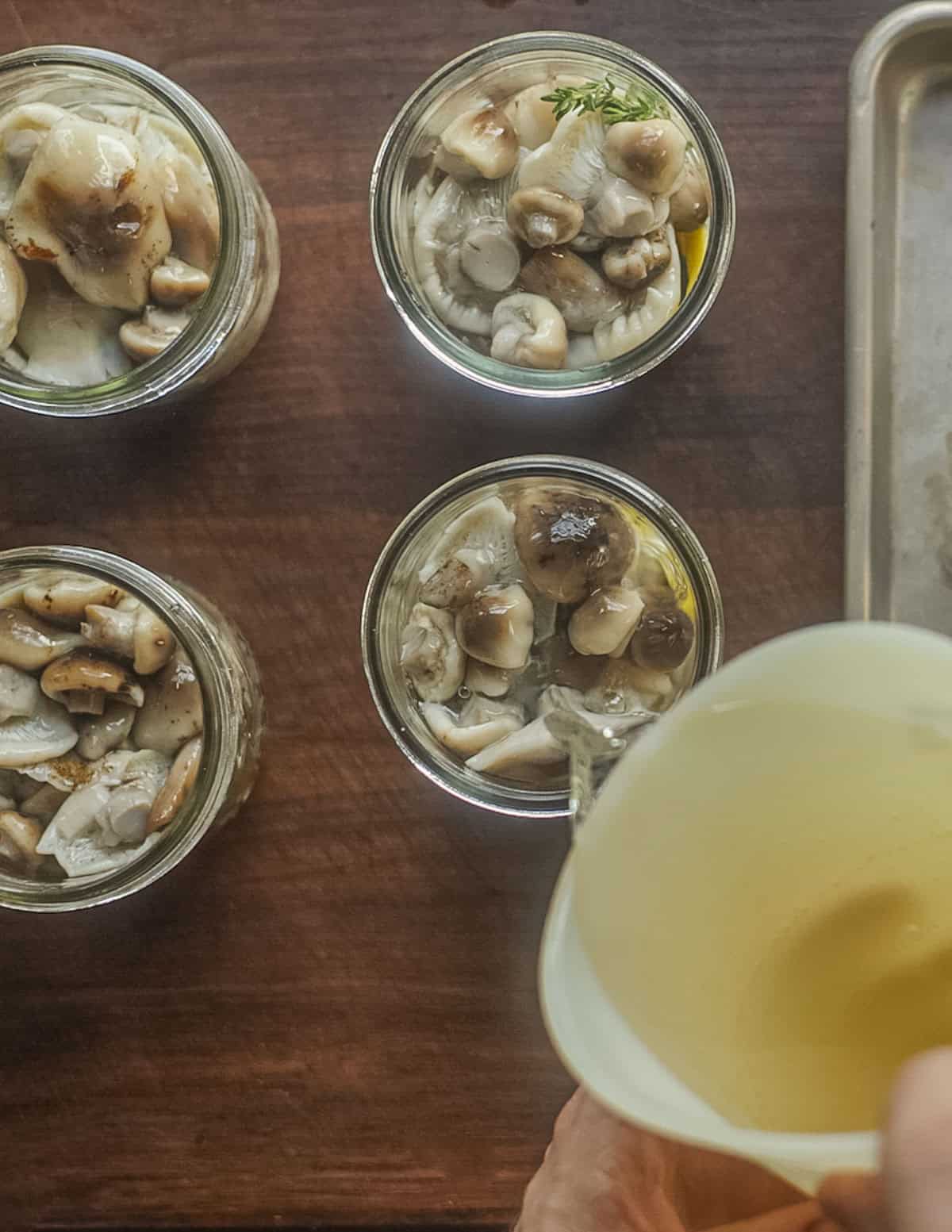


General Use
As I've said before, pickled mushrooms are more than something to eat cold with a toothpick, and that's especially pertinent here considering the mucilage. That said, some people I've served these to don't mind the slippery quality of the liquid and eat them cold. I mostly serve them warm.
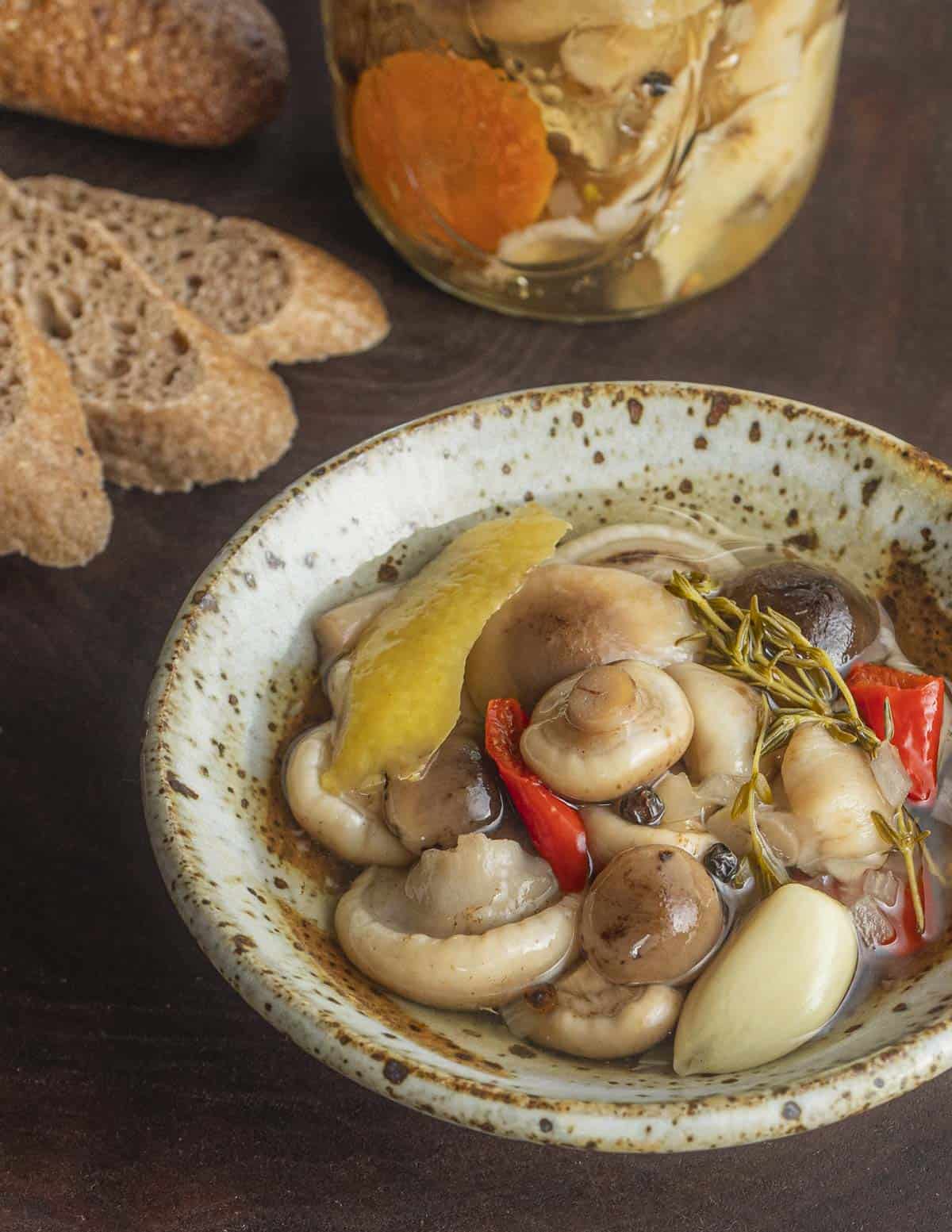
The best thing to start with is soup. Pictured below is a ginger-miso broth with shrimp, pickled honey mushrooms, dill, scallions and sunflower oil. The mucilage of the mushrooms isn't noticeable in warm broth and they could be passed off as canned straw mushrooms or silky rose gills / Volvariella.


The next thing to try is stuffing and fillings, especially pierogi. Finely or coarsely chopped they add a bright note that's a good counterpoint to mild mashed potatoes and grated cheese. In the dish of pierogi, watercress and caramelized onion sour cream below I've added some whole caps warmed in butter.

After patting dry, the mushrooms can make a nice "salad", mixed with sour cream and herbs and used as a condiment. I did mention pierogi, didn't I? The sour cream and dill helps to tame the mucilage even though it's served cold. You could also use my recipe for honey mushrooms in sour cream as a garnish.

Related Posts
- Mushroom Conserve / Pickled Mushrooms
- Sauteed Honey Mushroom Caps and Stems
- Slow Cooked Honey Mushrooms and Entolomas
Pickled Honey Mushrooms
Equipment
- 1 water bath canner
- 4 Pint mason jars with lids
Ingredients
Honey Mushrooms
- 2 lbs Young honey mushroom buttons
- 3 quarts Water
Pickle (Divide the seasonings between 4 pint jars)
- ½ cup Kosher salt
- 4 cups Water
- 1 cup White sugar
- 2 cups White vinegar or Rice wine vinegar See note
Spices and Aromatics
- 8 large Cloves of garlic
- 4 tsp Mixed peppercorns
- 12 sprigs Lemon thyme, see note
- 4 Strips lemon zest ~1 inch by 3 inches
- 1 Whole Red jalapeno or a pinch of chili flakes
- 4 Dried Bay leaves
- 2 Tsp Fresh lemon juice
- 1 Small Yellow onion, finely diced ¼ inch
Instructions
- Put the mushrooms and water in a pot, cover and bring to a boil. Remove the mushrooms to a bowl of water to cool.
- Bring the salt, sugar, vinegar and water to a simmer, then turn off the heat and allow to cool.
- Divide the spices and aromatics between 4 pint jars. Pack the jars with mushrooms, leaving ½ inch headspace, then add the pickle liquid to cover.
- Process the jars in a water bath canner for 15 minutes, remove and cool to room temperature.
- Label and date the jars, then store in a pantry. Any jars that do not seal can be refrigerated for a few months.
Using
- Some people may like the mushrooms rinsed after they're removed from the mason jar.
- Whether or not you like the mushrooms cold is a bit of personal preference. Warm the mushrooms up in soup, add them to fillings or sauces or anywhere else you'd use pickled mushrooms.


Valerie G.
Seeing the sour cream and honey mushroom combo reminded me of my dad making a sauce out of canned slippery jacks, sour cream, and fried onions, and using it as a topping for warm noodles.
LaRae
Amazing!
Kelly Chadwick
I'm excited to pickle Honeys, thank you. After reading this, I looked up which method of pickling breaks down chitin better, and read the enzymatic process of fermenting is more effective. Since you parboil the mushrooms, it probably doesn't matter. However, do you have comments on the comparison between brine verse fermentation?
Alan Bergo
Hey Kelly, there's a few things to unpack there. First on the chitin, I know there's a lot of discussion about how chitin is indigestible and how that relates to eating mushrooms, particularly raw. Humans have been eating mushrooms for a long time, and individual sensitivities aside, there really isn't an issue with chitin that I'm aware of. Corn that has not been nixtamalized (corn on the cob, etc) is also indigestible and eating too much causes nutrient deficiencies.
As far as fermenting vs pickling, fermentation may break down chitin better, but if there's no issue with chitin (sans some individual a-typical issue) then I see fermenting mushrooms to break down their chitin as a cure without a problem. Fermenting also has drastically different effects on mushrooms that vary across genera too and the flavor and texture are not for everyone. Most mushrooms become soft, mushy blobs at the two week point where the lowest pH is achieved through lacto-fermentation. With honeys I could also see it exacerbating the mucilage. I'm here if you have any follow up q's, hope that's helpful.